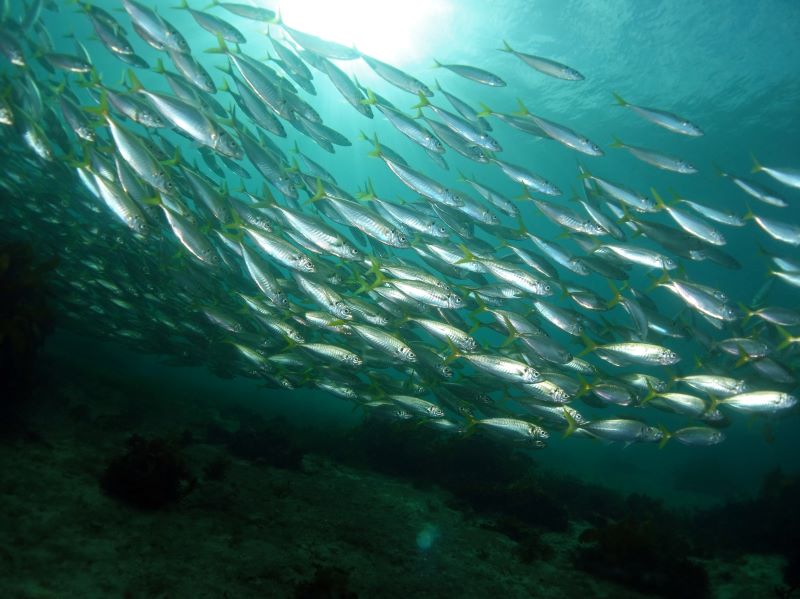
Open water
Open water, the largest habitat in the aquatic reserve, teems with marine life, including plankton—microscopic plants and animals.
Marine life
Some fish, like yellowtail scad, eastern hula, mullet, mado, eastern pomfred, silver sweep, and one-spot pullers, reside here permanently, filtering plankton from the water.
Attached to the bottom, invertebrates such as sea squirts, sponges, bryozoans, tube worms, sea fans, and tube anemones also feed on plankton.
Many animals and plants spend part of their life cycle in the plankton, aiding their wide distribution along the coastline; this is especially important for species typically attached to the seabed.
Open water is a temporary home for yellowtail kingfish, tailor, Australian salmon, dusky whaler sharks, and grey nurse sharks hunting for fish.
Additionally, it acts as a highway for animals like cownose rays, bonito, and dolphins on their journey elsewhere.

Yellowtail scad are resident plankton-eating fish within the aquatic reserve which live permanently in the open water habitat. (Photo: John Turnbull)



